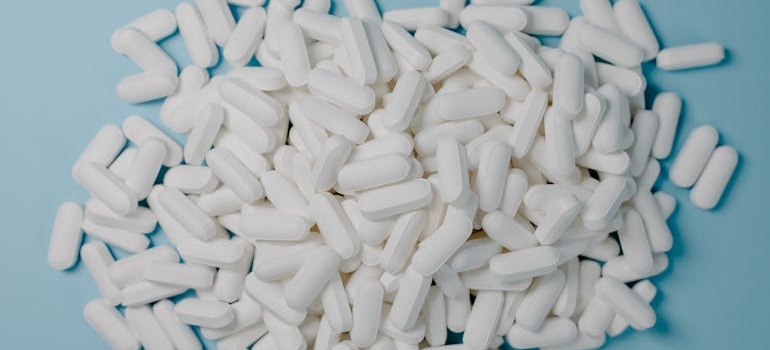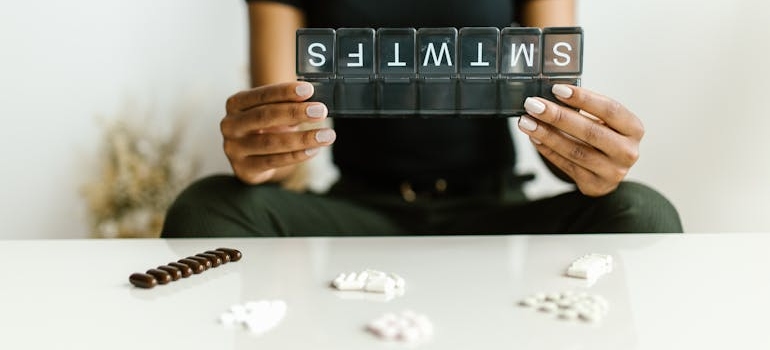Gabapentin Withdrawal: Symptoms, Timeline, Treatment
If you’re dealing with Gabapentin withdrawal, it’s important to know what to expect. This period can be tough, but understanding the symptoms, timeline, and treatments can really help. Everyone experiences withdrawal differently, but having the right information can make it easier to handle. Whether you’re thinking about stopping Gabapentin or you’re already in the process, this article aims to give you straightforward guidance.
Jump to Section
What is Gabapentin?
Gabapentin is a medication originally developed to treat epilepsy, but it’s also used to relieve nerve pain and control certain types of seizures. If you’ve ever had shingles, you might recognize the kind of nerve pain Gabapentin can help manage. Beyond that, doctors sometimes prescribe it to ease the discomfort from nerve damage in people with diabetes or other conditions.

It’s important to know that Gabapentin works by calming down your nervous system, which can help prevent seizures and reduce pain signals. Despite its benefits, it’s not suitable for everyone, and using it needs careful oversight by a healthcare provider to avoid potential side effects or dependency issues. If you’re considering this medication, or if you’re already using it and have questions, talking to your doctor is a great next step. They can offer personalized advice and support tailored to your health needs.
Does Gabapentin Cause Withdrawal?
Yes, Gabapentin can cause withdrawal symptoms, especially if it’s been used regularly for a long period or at high doses. It’s one of the most commonly abused prescription drugs, not necessarily because it gives a ‘high,’ but because it’s widely prescribed and accessible. When someone stops taking Gabapentin suddenly, they might experience symptoms like anxiety, insomnia, nausea, pain, and sweating. This happens because the body has become used to the drug’s presence and needs time to adjust to its absence.
If you’re thinking of stopping Gabapentin, it’s crucial not to do it abruptly. Consulting your doctor can provide you with a safe plan to taper off the medication gradually, reducing the risk and severity of withdrawal. This approach helps manage symptoms of gabapentin withdrawal more comfortably and safely, keeping you supported throughout the process.
Signs of Gabapentin Addiction
Recognizing signs of Gabapentin addiction is key to getting help early. If these signs sound familiar, it might be time to consider seeking help. Drug rehab in Pennsylvania offers programs that can support someone through recovery, providing the tools needed to overcome addiction in a supportive environment. Remember, reaching out for help is a brave and necessary step toward healing. If you or someone you know is worried about how they’re using Gabapentin, here are a few signs to watch for:
- Taking higher doses than prescribed: Using more Gabapentin than the doctor recommends is a red flag.
- Doctor shopping: Visiting multiple doctors to get extra prescriptions.
- Signs of withdrawal from gabapentin: Experiencing physical or psychological symptoms when not taking the drug.
- Neglecting responsibilities: Failing to keep up with daily tasks at home, work, or school because of drug use.
- Social withdrawal: Pulling away from family and friends.

Symptoms of Gabapentin Withdrawal
Going through Gabapentin withdrawal can be challenging, but being aware of the potential withdrawal symptoms of gabapentin can help you prepare. Here are some common signs that may appear when you begin to taper off or stop taking Gabapentin:
- Anxiety and restlessness: You might feel unusually anxious or find it hard to stay calm.
- Sleep issues: Insomnia or disturbed sleep patterns are common.
- Pain: You could notice increased sensations of pain, especially where you might have had pain before starting Gabapentin.
- Sweating and headaches: These physical symptoms are typical during withdrawal.
- Mood swings: Feelings might fluctuate more than usual.
If you’re going through these symptoms, remember, it’s a temporary phase. There are ways to manage these effects, and support is available. Talking to a healthcare professional can provide guidance tailored to your situation, helping you through this transition more smoothly.
Gabapentin Withdrawal Timeline
Understanding the timeline of Gabapentin withdrawal can help you anticipate and manage the challenges that come with it. Withdrawal from Gabapentin is typically divided into three phases: early withdrawal, acute withdrawal, and protracted withdrawal. Each phase has its own set of symptoms and duration, and knowing what to expect can make the process more manageable.
Early Withdrawal Phase
The early withdrawal phase begins 12 to 48 hours after stopping Gabapentin. You might experience anxiety, restlessness, and increased heart rate. Headaches and sweating are also common. This phase can be tough, but it’s usually short-lived. Staying hydrated and getting enough rest can help ease these symptoms. It’s important to stay connected with a healthcare provider during this time. They can offer guidance and support, ensuring you’re on the right path. Remember, this phase is temporary, and you’re taking the first step towards overcoming prescription drug addiction.

Acute Withdrawal Phase
The acute withdrawal phase can last from a few days to a week. Symptoms are usually more intense during this time, including insomnia, nausea, pain, and mood swings. Depression and cravings for Gabapentin may also occur. This phase is challenging, but it’s a crucial part of the process. Professional support from a prescription drug addiction treatment program can be invaluable during this time. They provide medical supervision and emotional support to help you through the worst of the symptoms. Keep reminding yourself that this phase will pass, and you are progressing towards recovery.
Protracted Withdrawal Phase (Post-Acute Withdrawal Syndrome, PAWS)
The protracted withdrawal phase, or PAWS, can last several weeks to months. Symptoms during this phase are typically psychological, such as ongoing anxiety, depression, and cravings. Cognitive issues like poor concentration and memory problems may also arise. This phase can be frustrating because it feels like a long journey. Regular counseling and support groups can help you navigate these lingering effects. Remember, healing takes time, and every day you move forward, you’re closer to complete recovery.
What Helps with Gabapentin Withdrawal?
Dealing with Gabapentin withdrawal can be tough, but there are effective strategies to help you through it:
- Restarting Gabapentin
- Magnesium supplements
- Slowly tapering Gabapentin dosage
- Exercise and a healthy diet
These methods can help you overcome prescription drug addiction and make the withdrawal process more manageable.
Restarting Gabapentin
If Gabapentin withdrawal symptoms are too overwhelming, restarting the medication can be an option. This doesn’t mean giving up. Instead, it allows your body to stabilize before attempting to taper off again. Restarting Gabapentin under a doctor’s supervision can provide relief from severe withdrawal symptoms.
It’s essential to have a clear plan in place with your healthcare provider. They can help adjust your dosage gradually, reducing the risk of intense withdrawal effects. This approach provides a controlled and safer way to manage your withdrawal. This step is about finding the best path to overcome prescription drug addiction without causing unnecessary distress.

Magnesium Supplements
Incorporating magnesium for gabapentin withdrawal can support your overall well-being during the recovery process. Magnesium plays a key role in muscle function and relaxation, which can ease cramps and tension. Additionally, magnesium helps improve sleep quality, a common challenge during withdrawal. You can find magnesium in foods like spinach, almonds, and avocados, but supplements can provide an extra boost.
Slowly Tapering Gabapentin Dosage
Gradually reducing your Gabapentin dosage, or tapering, is one of the safest ways to manage withdrawal. Abruptly stopping can cause severe symptoms, but tapering allows your body to adjust slowly. Your doctor will create a tapering schedule tailored to your needs, typically reducing the dose over weeks or months.
This method helps minimize withdrawal effects and makes the transition smoother. It’s crucial to follow the plan closely and communicate with your healthcare provider about any issues. Tapering requires patience and commitment, but it significantly increases your chances of a successful and comfortable withdrawal, helping you move forward confidently.

Exercise and a Healthy Diet
Incorporating regular exercise and a healthy diet can greatly support your recovery from Gabapentin withdrawal. Exercise releases endorphins, which improve mood and reduce anxiety. Even simple activities like walking or yoga can make a big difference. A balanced diet rich in fruits, vegetables, lean proteins, and whole grains provides essential nutrients that your body needs to heal.
Staying hydrated is equally important. Avoiding caffeine and sugary foods can help stabilize your mood and energy levels. These lifestyle changes can boost your overall well-being and resilience, making the withdrawal process more manageable. Small, consistent efforts in these areas can lead to significant improvements in how you feel.
How To Stop Taking Gabapentin
Deciding to stop taking Gabapentin is a significant step toward your health and well-being. There are two main approaches to consider: doing it on your own or seeking help at a detox center in Pennsylvania. Each method has its benefits and considerations, which we will explore to help you make an informed decision that suits your needs.
Should You Detox from Gabapentin at Home?
Considering detoxing from Gabapentin on your own? It’s vital to weigh the pros and cons before deciding. Here’s what you should consider:
Pros:
- Convenience: You can manage your schedule without disrupting daily responsibilities.
- Privacy: Detoxing at home allows for privacy and comfort in your own space.
- Cost-effective: Managing detox at home can reduce costs compared to inpatient treatments.
Cons:
- Safety concerns: Without medical supervision, you might face risks if withdrawal symptoms become intense.
- Lack of immediate support: You won’t have instant access to medical professionals if complications arise.
- Potential for relapse: Without structured support, the risk of returning to old habits increases.
If time constraints are holding you back from seeking help, consider outpatient detox rehab in PA. This option provides a balance, offering support while you continue with your daily life. It’s a flexible solution that can make your journey to recovery safer and more manageable.

What to Expect When Choosing Inpatient Drug Rehab
Opting for detox at an inpatient drug rehab in Pennsylvania can offer distinct advantages and some drawbacks. Let’s explore both sides to help you make an informed decision:
Pros:
- Medical Supervision: You have continuous access to healthcare professionals who can manage withdrawal symptoms safely.
- Structured Environment: A controlled setting minimizes distractions and temptations, supporting your focus on recovery.
- Comprehensive Support: Beyond medical care, you benefit from counseling and group support, which can enhance your resilience and coping strategies.
Cons:
- Cost: Inpatient treatment can be more expensive due to the comprehensive care and facilities provided.
- Time Commitment: It requires a significant commitment of time away from work and family, which might not be feasible for everyone.
- Privacy: Living in a shared space in a rehab center in Pennsylvania may mean less personal privacy than you are accustomed to at home.
Detox centers provide a supportive environment that can make the process smoother and often more successful. If you’re weighing options, consider how these factors align with your personal recovery needs.
Finding Strength in Gabapentin Withdrawal Recovery
Gabapentin withdrawal can be a tough ride, but you’re not alone. Knowing what symptoms to expect and when they might occur helps you prepare and manage better. Remember, each step you take towards overcoming this is progress, even on the hard days. If symptoms feel overwhelming, seeking help from professionals at drug rehab in Reading PA can make a big difference. Our professionals offer support and treatment tailored to your needs. You have the strength to get through this, and there’s support whenever you need it. Take it one day at a time and keep focusing on your recovery journey.